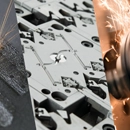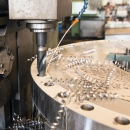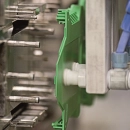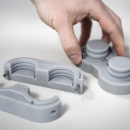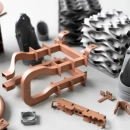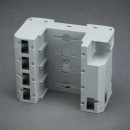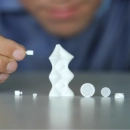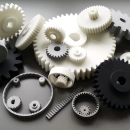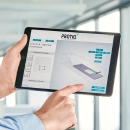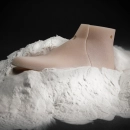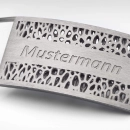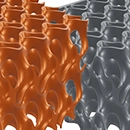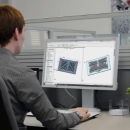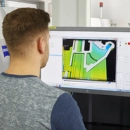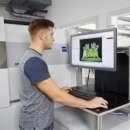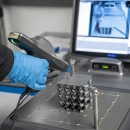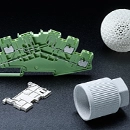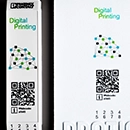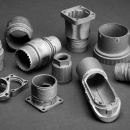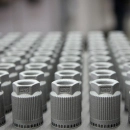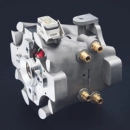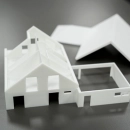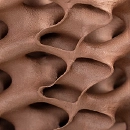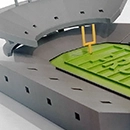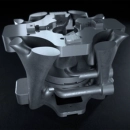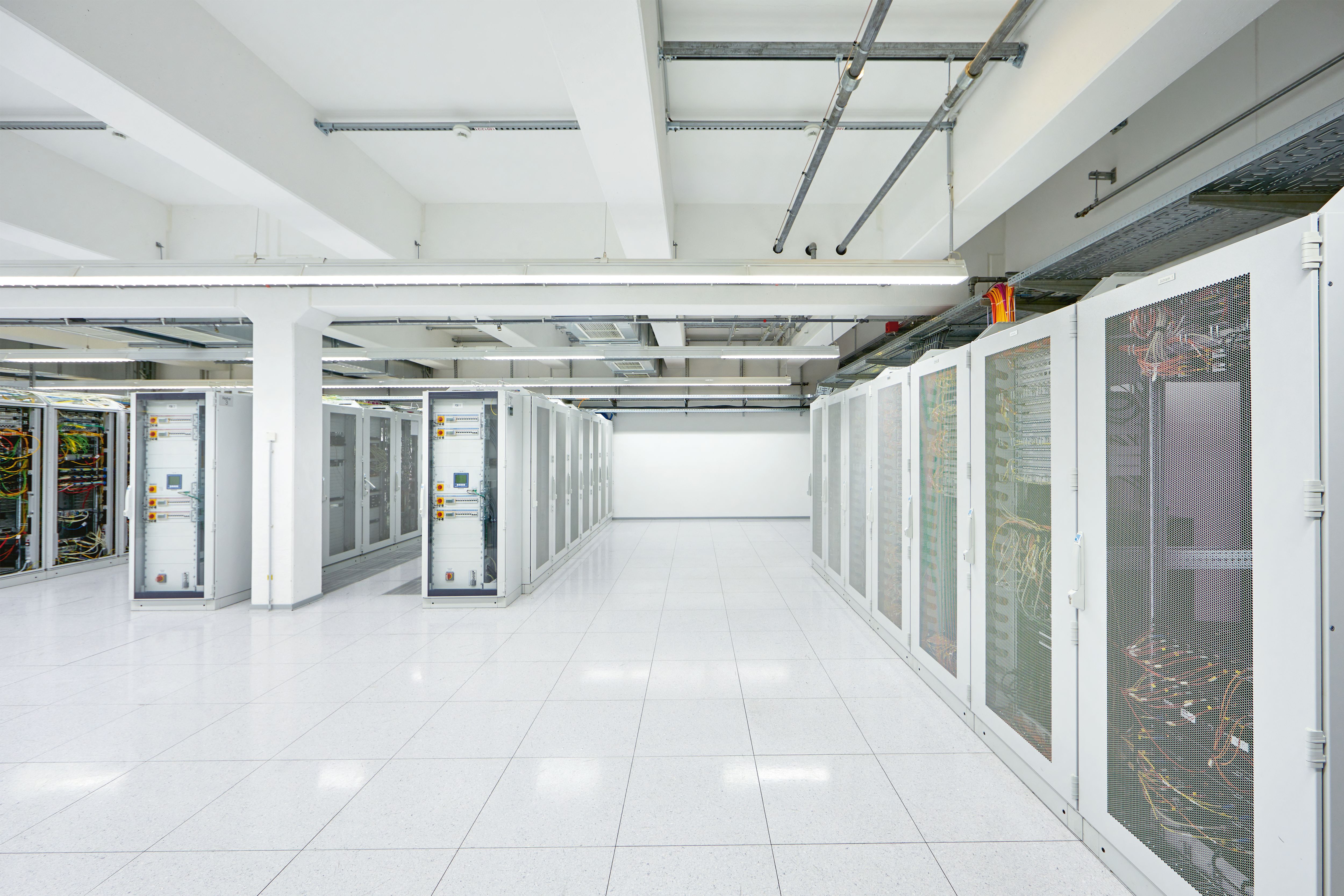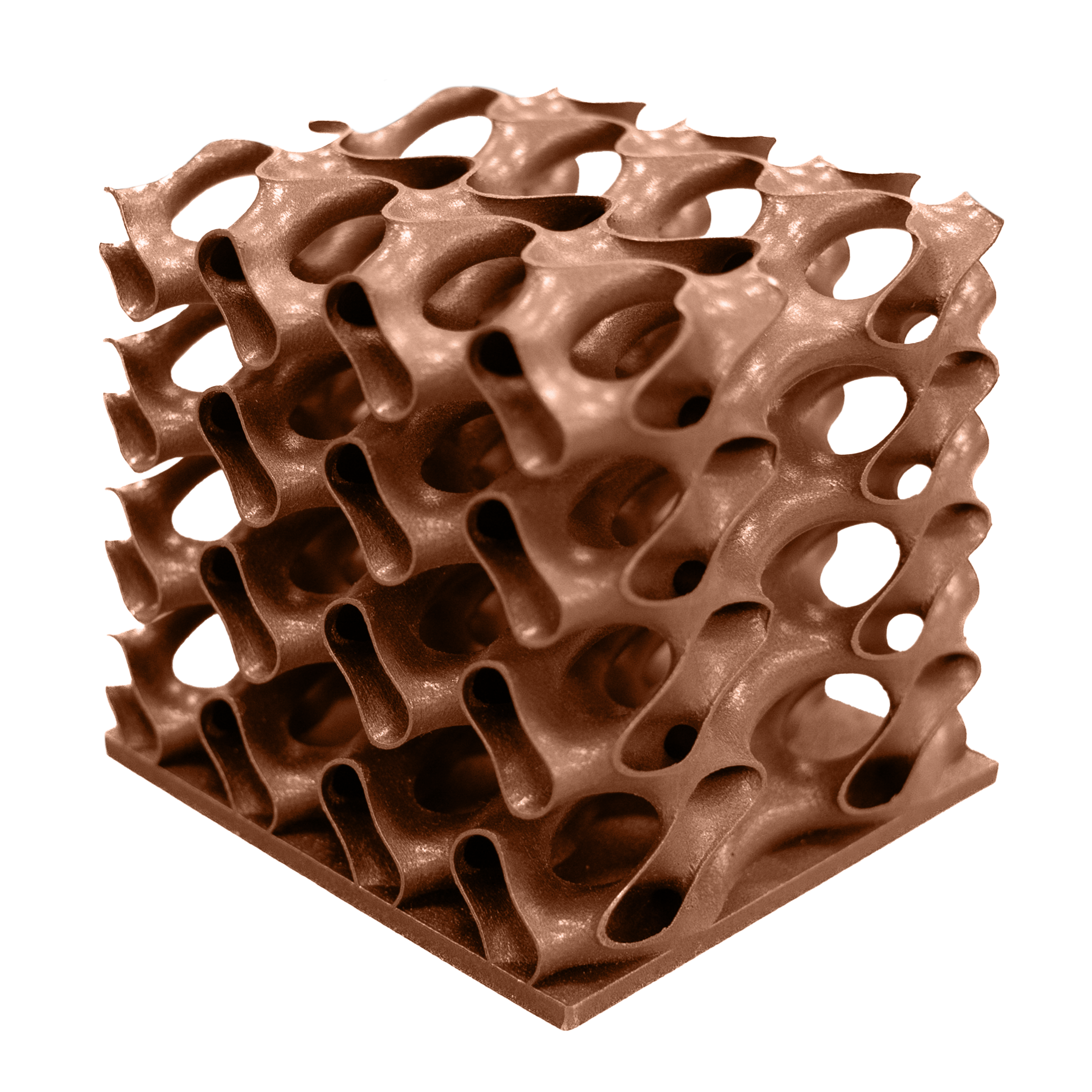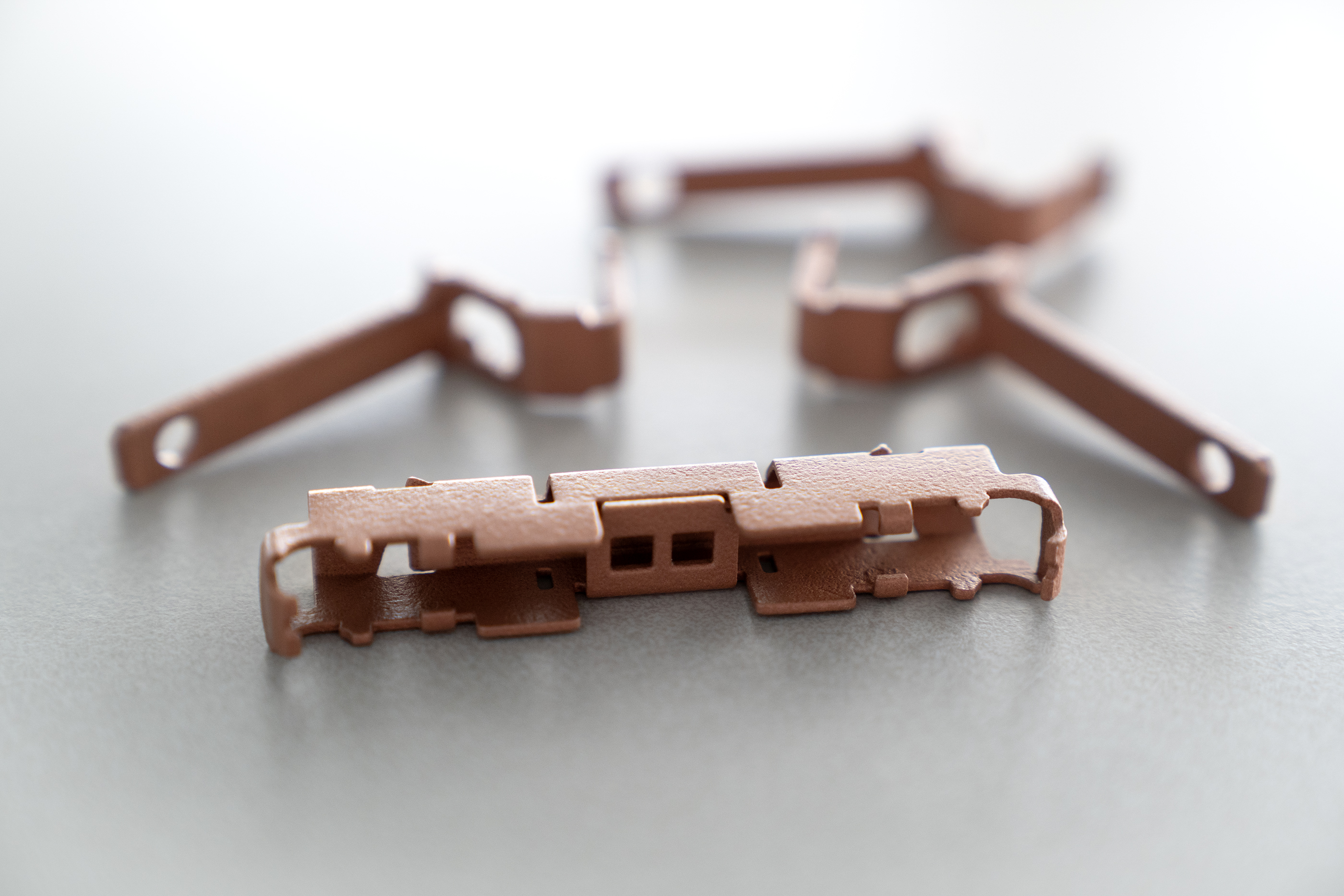Additive manufacturing as a driver of innovation for data centers
Boom in hyperscale data centers and increasing requirements
Data centers form the foundation of the digital society. Hyperscale data centers in particular - facilities with at least several thousand servers - are growing rapidly, driven by cloud services and AI applications. In fact, the mark of over 1,000 hyperscale data centers worldwide was already exceeded at the beginning of 2024. The total volume of these mega data centers doubles roughly every four years and well over 100 new large-scale facilities are added every year.
However, this boom is accompanied by considerable technical and infrastructural challenges. Energy consumption and heat generation increase with each new generation of data centers. In many data centers today, 33-40% of the total energy consumption is used for cooling the components alone. In addition, traditional cooling methods consume an enormous amount of water: Worldwide, it is estimated that hundreds of billions of liters of fresh water are used every year to cool server farms - an ecological and operational cost factor.
In view of these developments, it is clear that conventional solutions often reach their limits. Traditional air cooling is reaching its efficiency limits with ever denser, hotter server racks. Even advanced concepts such as direct liquid cooling or immersion cooling are under extreme pressure due to increasing power densities. Innovative approaches are more in demand than ever - in the field of cooling technology, but also in the design-in of components and the supply chain. This is where additive manufacturing comes into play, which could be a key technology to meet these challenges.
Additive manufacturing as a solution approach in data centers
Additive manufacturing - colloquially known as 3D printing - refers to manufacturing methods in which components are built up layer by layer from digital models. This technology has found its way into many industries in recent years and enables designs that would be almost impossible to realize using traditional methods (milling, casting, etc.). For the construction of modern data centers, 3D printing opens up a wide range of possibilities to meet increasing requirements:
- Decentralized production and faster availability: instead of relying on long global supply chains, components can be printed closer to the point of use in the future. A market study estimates that around 2,000 metal 3D printers (SLM) will be needed worldwide by 2033 just for the production of cooling components such as cooling plates in data centers. By comparison, this exceeds the current annual production of all industrial 3D printers. This shift in production offers enormous opportunities to reduce supply chain dependencies, as components could be produced locally or regionally. Decentralized on-demand manufacturing is a strategic advantage, especially against the backdrop of geopolitical uncertainties and delays in supply chains.
- Optimized design for cooling and efficiency: Additive manufacturing enables complex geometries that would not be feasible with milling or casting processes, or only in many individual steps. Heatsinks and heat exchangers can be designed in such a way that they enable maximum heat transfer in the smallest possible space. For example, cooling channels can be printed directly inside components. Such design freedom is essential for future high-density servers in order to dissipate heat efficiently.
- Faster development cycles: 3D printing allows prototypes and small series to be produced extremely quickly. Engineers can test and iteratively improve new cooling concepts or mechanical components within days instead of months. This more agile development significantly shortens the time-to-market for innovations in data center infrastructure.
- Customized and integrated solutions: No two data centers are the same - using 3D printing, components can be customized to meet specific requirements without the need for expensive special tools. For example, brackets, cladding or airflow guides can be manufactured to fit a specific server configuration perfectly. It is also possible to integrate several functions into one component: for example, a structural chassis element that also serves as a heatsink or a tube that is 3D printed directly with brackets and connection flanges in one piece. Such multifunctional components simplify superstructures and can reduce weight and assembly costs.
Fields of application for 3D printing in data centers
Cooling components: Heat exchangers, heat pipes and cold plates
Cooling technology is a key area of application for 3D printing in data centers. This is probably where the technology offers the greatest leverage, as efficient cooling directly reduces energy consumption and enables higher computing densities. Several approaches are already being researched and some are being implemented in initial products:
Heat exchangers and heat pipes: Beyond direct chip coolers, larger heat exchangers in the data center can also benefit from AM. For example, water cooling plates for rack cooling circuits, air-water heat exchangers and components for recoolers are increasingly being designed as additive solutions. Thanks to the smooth, continuous channel structures, the pressure drop remains low, which means that less pump energy is required and the heat exchanger works very efficiently. Heat pipes - thermally conductive cooling tubes with phase changes - can also be rethought: initial experiments with 3D-printed heat pipes made of aluminum showed over 24% lower thermal resistance compared to conventional designs. Printing allows, for example, fine capillary structures or complex-shaped evaporators to be integrated directly, which increases the efficiency of these passive cooling elements.
PROTIQ can contribute its special expertise in this area in particular: PROTIQ was the first company in the world to successfully process pure copper in industrial 3D printing. Thanks to this pioneering achievement, highly conductive cooling structures can be produced with maximum efficiency - ideal for heat exchangers and heat pipes where thermal conductivity is crucial.
Cold Plates: These flat heatsinks, through which coolant circulates, sit directly on processors or GPUs to dissipate heat. Conventional cold plates usually contain milled microchannels or fins, but have geometric limits. Additive manufacturing can be used to create complex internal channel structures that maximize heat exchange. For example, gyroid structures could be printed inside the cooling plate, which drastically increase the surface area and optimize the flow. A recently presented design-in achieved up to 35% better cooling performance compared to conventional microchannel plates. Such advances show the enormous potential: 3D-printed copper cold plates with optimized geometry can handle higher heat loads or reduce pumping energy.
3D printing can revolutionize data center cooling technology. Complex internal structures lead to higher heat exchange efficiency, lower flow resistance and therefore more energy-efficient cooling systems. Given the high proportion of cooling energy in data centers, the potential savings are considerable - every percentage point of efficiency gain has a noticeable impact on power usage effectiveness.
Mechanical structural parts and housing components
In addition to thermal management, additive manufacturing also offers advantages for mechanical components in data centers. Server racks, housing, cable management and infrastructure in general could be made more flexible and optimized through 3D printing:
Mounting and fastening parts: Countless small components such as brackets, adapters, spacers, hinges etc. are installed in the thousands of racks of a hyperscaler. These often have to be adapted to specific devices or structural conditions. Instead of universal 08/15 solutions, 3D printing can be used to produce customized fastening solutions on-demand. For example, precisely fitting formwork or support parts for cable ducts, fan mounts or panels could be printed to make optimum use of the available space. Spare parts for older rack systems that are no longer supplied by the OEM can also be digitally redesigned and printed. The design freedom also allows for lighter structures - such as grid reinforcements or topology-optimized carriers that save material but are still stable. Overall, weight and material consumption can be reduced, which makes a difference in large systems.
Racks and housing: Additive manufacturing of entire rack modules or housing parts is also conceivable. Although complete 3D-printed server racks are not yet economically viable, hybrid approaches are: large surfaces could be made from standard profiles, but specially shaped connectors or corner pieces could come out of the printer. For example, organically shaped air guide elements could be integrated directly into the rack structure to better separate cold and hot zones.
Auxiliary structures and infrastructure: Beyond the IT hardware itself, there is a wide range of infrastructure in the data center - from cable routes and air conditioning ducts to mounts for sensors, surveillance cameras or robotics. Additive manufacturing can efficiently provide small series parts in all of these areas. For example, individual brackets for temperature and humidity sensors could be printed that can be optimally mounted in the desired position. Or modular air ducts and distributors to finely tailor the air conditioning to specific rack rows, which is difficult to implement with standard components.
Spare parts and maintenance - digital warehousing
One aspect that is often overlooked, but is essential for the operation and maintenance of data centers, concerns spare parts. Data centers contain thousands of mechanical and electromechanical components that need to be maintained over a life cycle of 10-15 years. Defective components - be it special fan brackets, screw sockets on mainboards, pump adapters or housing parts - can cause failures in the worst-case scenario if replacements are not available quickly. This is where additive manufacturing offers a digital warehouse approach: Instead of keeping each part physically in stock, only the digital 3D model is stored and printed out when needed.
Platforms such as the PROTIQ Marketplace already offer practical solutions for this: Companies can store their projects and 3D models via the customer account and thus build up their individual digital warehouse. Required parts can then be reordered with just a few clicks - directly from the saved data set. This creates an efficient, digital spare parts strategy that saves time and minimizes downtime risks.
Data center operators rarely have their own expertise in additive manufacturing. This makes it all the more important to have a reliable partner like PROTIQ, who has many years of experience, a deep understanding of the technology and in-depth industry knowledge. PROTIQ not only provides support in the implementation of projects, but also advises customers - from design optimization and material selection through to series production.
Data centers need innovative solutions
In view of the unchecked growth of data centers and the associated challenges in cooling, energy efficiency and supply chain, additive manufacturing offers a toolbox for innovative solutions. Viewed neutrally, it is not a replacement for all conventional methods, but a valuable addition to elegantly solve certain problems. Be it the more efficient cold plate that reduces the power requirements of air conditioning, the customized component that increases availability or the more local production that avoids supply bottlenecks.
It is important to assess the framework conditions correctly: Where it says additive, the desired quality must also come out in the end. This requires engineering skills and process expertise. This is where partners like PROTIQ come into play: with its experience as a 3D printing competence center within the Phoenix Contact Group, PROTIQ brings precisely this expertise to the table. Numerous research projects and initial commercial successes already show that additive manufacturing works in the data center environment and can deliver real added value.
Over the next few years, we are likely to see hyperscalers and infrastructure specialists increasingly turning to 3D printing to gain a competitive edge - whether in the form of more efficient hardware or more agile rollouts. This is an exciting development for the data center industry as a whole: the limits of what is possible in terms of cooling and design-in are expanding, while at the same time dependency on traditional supply chains is decreasing. Additive manufacturing is therefore an enabler - a tool to make the data centers of tomorrow more sustainable, more powerful and more resilient.
How can I start a project?
Upload your 3D data directly to the PROTIQ Marketplace or get individual advice. PROTIQ supports you from design optimization to series production.
How does the digital spare parts strategy work?
Instead of physical storage, digital 3D models are stored. If required, these can be printed and delivered directly via the PROTIQ Marketplace - quickly and in line with demand.
How does 3D printing improve cooling in data centers?
Complex geometries such as integrated cooling channels or gyroid structures allow heatsinks to be designed more efficiently. This reduces energy consumption and increases the performance of the systems.
Which materials are available for thermally demanding applications?
For cooling components, for example, pure copper is used, which is characterized by excellent thermal conductivity. Other materials include aluminum, stainless steel and engineering plastics - depending on the requirements.



 Deutsch
Deutsch English
English